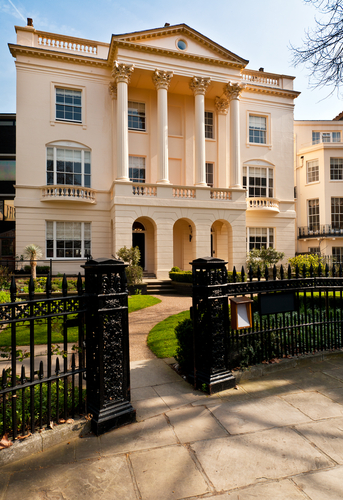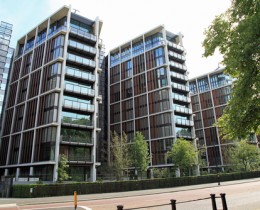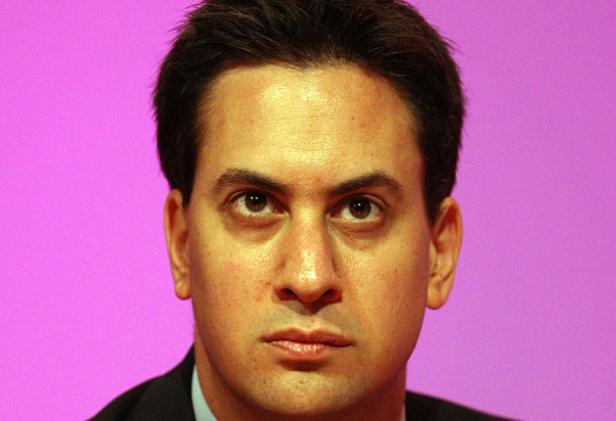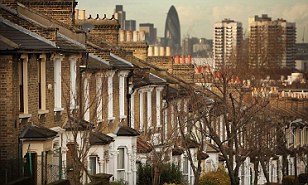503: UK 2014 Trends for Property Investors
03-15-2014

Perception: The perception is that in 2008 there was not a property crash in the UK and that property prices are now motoring out of control into the stratosphere. But the reality is rather different.
· Mortgage transactions dropped to 30% of their peak 2007 levels
· Home sales dropped to 50% of the 2007 levels
· Home building rates dropped from 180,000 units in 2007 to 100,000 units a year by 2010 and have only recently recovered to about 140,000 units a year
· Prices dropped by 10-20% in most UK areas from 2008 to 2010
Inflation: Meanwhile general inflation was officially claimed to be about 4% a year whilst wage inflation dropped from 4% to 1-2%. However real inflation non manipulated - was probably running at double the claimed about for the period 2008 to 2013 hence inflation was more like 7% rather than 3.5% for 4 years, a compounded rate of 40%.
inflation dropped from 4% to 1-2%. However real inflation non manipulated - was probably running at double the claimed about for the period 2008 to 2013 hence inflation was more like 7% rather than 3.5% for 4 years, a compounded rate of 40%.
House Prices Crashed: This had the effect of meaning that real unofficial terms - inflation adjusted - property prices actually dropped by 30-50% in most areas. This therefore was a very sharp re-adjustment actually a crash - in about 90% of areas in the UK. Only West London remained largely unscathed by this crash although as Sterling declined in value and inflation raged, the actual cost of West London property for most foreigners dropped sharply.
Recovery Mode: The reason for mentioning this is as a back-drop to why property prices are rising so strongly at the present time. By inflation stealth they have become far more reasonably priced in most areas allowing people to afford to purchase properties if they have a reasonable job. House price to earnings levels are about 3.5-4.5 in most parts of the UK except London. Meanwhile, record low interest rates, help to buy subsidies and rising employment are helping boost property prices in almost all areas. This is not yet a boom since they have only recently started rising in 90% of UK areas, so property prices increase probably have some way to run.
Pent Up Demand: From late 2007 until early 2013 a five year period there were almost no first time buyers purchasing property. Instead, these younger people were waiting for prices to drop further, struggled to get any mortgages and preferring a lower risk and flexible approach staying on the sidelines and renting property. No-one really expected prices to start rising sharply because most areas remained in depression as stagflation took hold, living standards dropped and spending cuts took hold private sector business also struggled. Now it seems 5-7 years worth of first time buyers are jumping into the market as prices have started rising after the Help to Buy scheme kicked things off in March 1013. One can understand this herd mentality since these first time buyers do not want to be left behind as property prices rise. They are now being egged in by their equity rich parents giving extra hand-outs to help their kids onto the property ladder. Its all normal human behaviour. Buy-to-Let investors are also seeing the opportunities driven by higher yields and strong rental demand, with record low interest rates for buy to let mortgages helped by a strong pound. Again, the First Time Buyers and Buy to Let investors are competing for a drastically reduced housing supply in London supply has almost dried up. Everyone seems to want to hang on to their properties since they see good times ahead. All this housing market mentality is rather like we saw in 2002 and 1988. It probably has some way to go also stimulated by waves of migrant workers also keep to buy their own properties, especially in London.
first time buyers purchasing property. Instead, these younger people were waiting for prices to drop further, struggled to get any mortgages and preferring a lower risk and flexible approach staying on the sidelines and renting property. No-one really expected prices to start rising sharply because most areas remained in depression as stagflation took hold, living standards dropped and spending cuts took hold private sector business also struggled. Now it seems 5-7 years worth of first time buyers are jumping into the market as prices have started rising after the Help to Buy scheme kicked things off in March 1013. One can understand this herd mentality since these first time buyers do not want to be left behind as property prices rise. They are now being egged in by their equity rich parents giving extra hand-outs to help their kids onto the property ladder. Its all normal human behaviour. Buy-to-Let investors are also seeing the opportunities driven by higher yields and strong rental demand, with record low interest rates for buy to let mortgages helped by a strong pound. Again, the First Time Buyers and Buy to Let investors are competing for a drastically reduced housing supply in London supply has almost dried up. Everyone seems to want to hang on to their properties since they see good times ahead. All this housing market mentality is rather like we saw in 2002 and 1988. It probably has some way to go also stimulated by waves of migrant workers also keep to buy their own properties, especially in London.
Two Speed Economy: The UK has a two speed economy London and SE England at one level, and the rest of the UK at an altogether slower pace. Of course the Bank of England needs to set rate to stimulate the economy in Liverpool, Glasgow and Cumbria, not just London. Hence historically record low interest rates are designed to boost outlying UK areas out of a deep depression that started in 2008. The  consequence is that London is stimulated to an extreme - this means property price inflation cannot be controlled to any great extent, particularly as house building levels remain so low hindered by planning constraints, high council taxes and Nimbyism.
consequence is that London is stimulated to an extreme - this means property price inflation cannot be controlled to any great extent, particularly as house building levels remain so low hindered by planning constraints, high council taxes and Nimbyism.
Expectations: What we expect is that London property prices will continue to zoom higher in 2014 whilst a broader UK recovery takes hold in all other regions, in the run up to the next General Election in May 2015. Remember its only 14 months away now very close. Scottish property prices might be held back somewhat by the uncertainty over the referendum, but its likely to become clearer the vote will likely to be a yes for staying within the UK as we move closer to May 2015 and thence property prices might stage a stronger recovery with information.
Election Uncertainty: The big unknown is who will win the General Election. If Labour gets an outright majority which is most likely in our view then London property prices will almost certainly take a hit. Its possible northern property prices could be boosted slightly in the short term after May 2015 as Labour spending programmes kick in, but longer term as growth and confidence wanes in the UK economy and is political management just like it did in France - then property prices would likely drop sharply.
Impact of Labour Win: Any short term investors that are only interested in capital gains that are invested in London should consider strongly the threat of a Labour win. They might choose to monetise their portfolios now. If Labour win power, they will tax Londoners and their property heavily. Rents would likely rise even if they try rent controls and the economic engine of the UK, London, would slow down sharply with punitive tax rises on both indigenous UK citizens and overseas investors. The super-rich would likely up-sticks and move to a more tax friendly country just likely they are doing in France at this time.
Socialist Experiment: Eventually this slowdown would hit northern areas and unemployment would rise. Its just the normal effects of capitalism versus socialism. If you analyse the Venezuelan and French socialist experiments and the devastating impact of the overspending during the Blair-Brown years you should be able to see ample evidence to predict an outcome of Labour majority win would send property prices in southern England lower.
and French socialist experiments and the devastating impact of the overspending during the Blair-Brown years you should be able to see ample evidence to predict an outcome of Labour majority win would send property prices in southern England lower.
First Time Buyer Hotspots: For the first time buyer and also canny property investor, at this time, its worth considering some of the areas in London that will probably see property price rising more sharply than average over the next five years particularly if there is a Tory win or another Tory-Liberal Coalition:
Acton: This backwater with large deprived council estates in West London has seen improvements in the last few years examples: proximity to giant Chiswick Business Park (15,000 jobs); general gentrification; good communications on the Piccadilly Line; a new Crossrail station due by 2017 that will whisk people to Central London in 12 mins; proximity to M4 west and Heathrow, with West End only 2½ miles east.
New Cross / New Cross Gate: The lowest priced property close to Central London can still buy a 1 bedroom 1990s flat for £150,000 a winner for first time buyers on the lowest London budget up to £180,000 wanting to be central. Also has  a tube, Docklands Light Railway at Deptford Creek with new Overground opened and only 12 mins to London Bridge buy normal rail. Has to regenerate price should rise sharply in 2014.
a tube, Docklands Light Railway at Deptford Creek with new Overground opened and only 12 mins to London Bridge buy normal rail. Has to regenerate price should rise sharply in 2014.
Shoreditch: Prices have already skyrocketted, but longer term, because of Tech City, Crossrail stations, proximity to The City, West End and Kings Cross, this most proximal of East End locations should see prices move into the prime real estate bracket. Huge numbers of highly educated young aspiring overseas people have moved in and will get more wealthy as they stay longer driving further improvements in the area. A long term winner.
Tottenham Court Road: Already very pricey, but set to increase further because of its proximity to the West End (on the fringes), The City (on the fringes), Kings Cross Station with the highly important brand new Crossrail Station opening in 2017. This will allow rich Londoners living in this area to travel rapidly to Heathrow west-east. For a globe-trotting person, a perfect central location with close proximity to just about everything. A winner longer term - best get in well before the station opens. That said, the area is exposed to a wider London property price collapse if you think prime London prices are already in bubble territory.
Trends: The longer term trends in the UK remain the same, in that:
· Only 145,000 new homes are being built each year
· Demand for new homes is running at around 300,000 with the main focus of demand being southern England
· The population of the UK continues to climb with a net 200,000 people migrating into the UK each year, again focussed on southern England
· Rental demand is likely to remain strong because private or social housing remains at such reduced levels during this housing crisis
· House prices particularly in areas in or close to London are likely to keep rising in the next 14 months up to the next election
· Despite all the talk, practically nothing is being done about red tape and the planning process. The Greenbelt remains out of bounds and building New Towns far too politically sensitive. No large projects are slated. The severe housing shortage should remain.
· Nimbyism is getting more intense in the UK which stifles the amount of homes being built
· Despite higher property prices, very high building and land costs and high risks mean builders are not building large numbers of houses anymore most new properties are luxury flats that do not help reduce house prices (if anything, they can have the opposite effect)
· Plenty of huge new warehouse supermarkets are being built it seems easy to get planning consent for these but its altogether a different story for homes almost no new detached houses are being built.
· Continued security problems in other countries are driving new waves of super-rich into London that is boost property prices across the board
· The UK-London is considered a safe haven with Sterling benefiting from this status as long as the Tories are in charge, this is likely to remain
Goldilocks: For property investors, we have a Goldilocks period of rising demand, reducing supply, low interest rates and a strong pound. All these are set to drive property prices higher in the next 14 months, as we predicted back in December.
We hope this Special Report has been helpful for your investment strategy.

